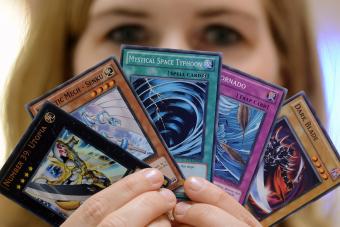
Domestic felines have never looked quite so charming as they do in the vintage cat art that elongated their bodies and flattened their heads. Sometimes referred to as atomic cats, these collectible artworks span a myriad of mediums, sizes, and artistic movements. Whether you're a burgeoning cat lady or trying to remodel your ranch-style house into the perfect 1950s abode, you won't be satisfied with having only one of these mischievous pieces in your collection.
Vintage Cat Art and the Mid-20th Century Art World
From the 1950s to the early 1970s, the art world was bustling with new aesthetics and experimental styles. Abstract Expressionists of New York City reduced subjects to their essence in an almost unidentifiable way, Mid-Century Modernists took to using earthy tones and natural materials, while Pop Artists infused their work with neon colors and commercial critique. Although animals were not a prominent subject of these different movements, each one had artists who sculpted, painted, or illustrated their version of the frisky feline to life. Thus, as you move throughout your search for vintage cat art, you'll find images with influences from some, if not all, of these historic styles.
Vintage Cat Art Mediums
While there was an abundance of paintings and illustrations of these iconic cats during the mid-20th century, artists also engaged in crafting delicate cat sculptures out of glass, wood, and ceramics. The most common types of vintage cat art that you'll come across include:
- Prints
- Paintings
- Sculptures/figurines
- Printed ephemera (greeting cards, decorations, and so on)
Identifying Vintage Cat Art
Not only is retro cat art visually striking, its playful and stylistic appearance make it incredibly easy for a novice art enthusiast to identify today. Here are a few of the main characteristics to look for when trying to authenticate a potentially vintage piece of cat art.

Paintings and Prints
Vintage paintings and prints of cats usually include a combination of these mid-century details.

- Stylized cat bodies - Artists painted these cats with bowling-pin shaped bodies and iconic football-shaped heads.
- Avant-garde minimalist influence - These vintage cats were not created with realism in mind, and using influence from Avant-Garde movements like Abstract Expressionism, artists invoked an early sense of minimalism to their cat's features and forms.
- Atomic-age symbols - While these cats were normally the focus of these artworks, many of these artists included classic atomic age symbols in the background, like starbursts and color blocks.
- Mid-century modern color palette - Artists favored bright blues, oranges, and pinks, as well as the neutral tones of avocado greens and warm browns when painting these cats into their pieces.
Sculptures
The other most common example of retro cat art comes in the form of multimedia sculptures, ranging from desk-sized figurines to life-size statues. Given that these pieces are more abundant in the collector's market than paintings and prints are, these works don't share many common characteristics. However, a few things you can look out for include:

- Elongated cat bodies - As with the vintage paintings and prints, cat sculptures from this period exaggerated the cat's length and shape in forms that recall the mummified wrappings of beloved Egyptian pets.
- Minimalist details - A significant number of these sculptures include few markings and details, often being limited to that of the mouth, nose, lips, and the claws or ears.
- Either sitting or curled - The vast majority of these sculptures were created to resemble a cat that is curled into itself as if it were napping or a cat seated on all-four legs.
Collecting Vintage Cat Art
One of the difficulties of collecting vintage cat art comes from the lucrative reproduction market that dominates digital sellers like Etsy and Ebay. Finding authentic prints or paintings of your feline friends is unusually difficult. Unfortunately, the aspects these artworks were popular for - their simple and clean designs - are easy to replicate in production platforms like Adobe Photoshop. While this does make it really easy and cheap to acquire this mid-century aesthetic, it does make actual collecting incredibly hard. However, if you're interested in adding a vintage cat sculpture to your collection, you'll find a number of them listed on auction websites and for sale in large antique stores.

Vintage Cat Art Values
Considering that collecting the arts can be an expensive passion, pursuing vintage cat art can do some serious damage to your wallet. Paintings can range between $200-$500 on average, like this 1950s painting entitled Seven Cats by John D. Queen which sold for almost $500. Meanwhile, sculptures are estimated between $100-$1,000 depending on their quality, materials, and the artist's reputation. For example, an unusually colored lavender glass cat sculpture by Licio Zanetti Murano from the 1950s is listed for nearly a $1,000, and a ceramic pottery cat by Manuel Felguerez Barra from the same period is also evaluated to be worth about $1,000.
Collecting and Detecting: Hunting Down Vintage Cat Art
While the world focuses on solving the mysteries and murders of at-home subscription boxes, you can turn your magnifying glass to the difficult task of discovering examples of authentic vintage cat art to add to your personal collections. It's time to put on your detective hat from last year's Halloween costume, and start looking for that perfect piece to hang above your mantle.







